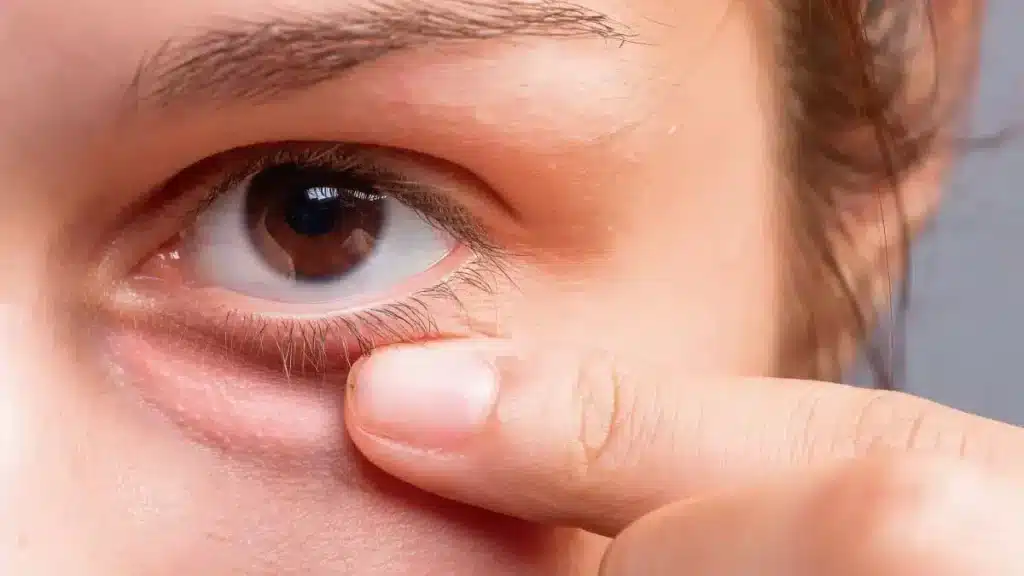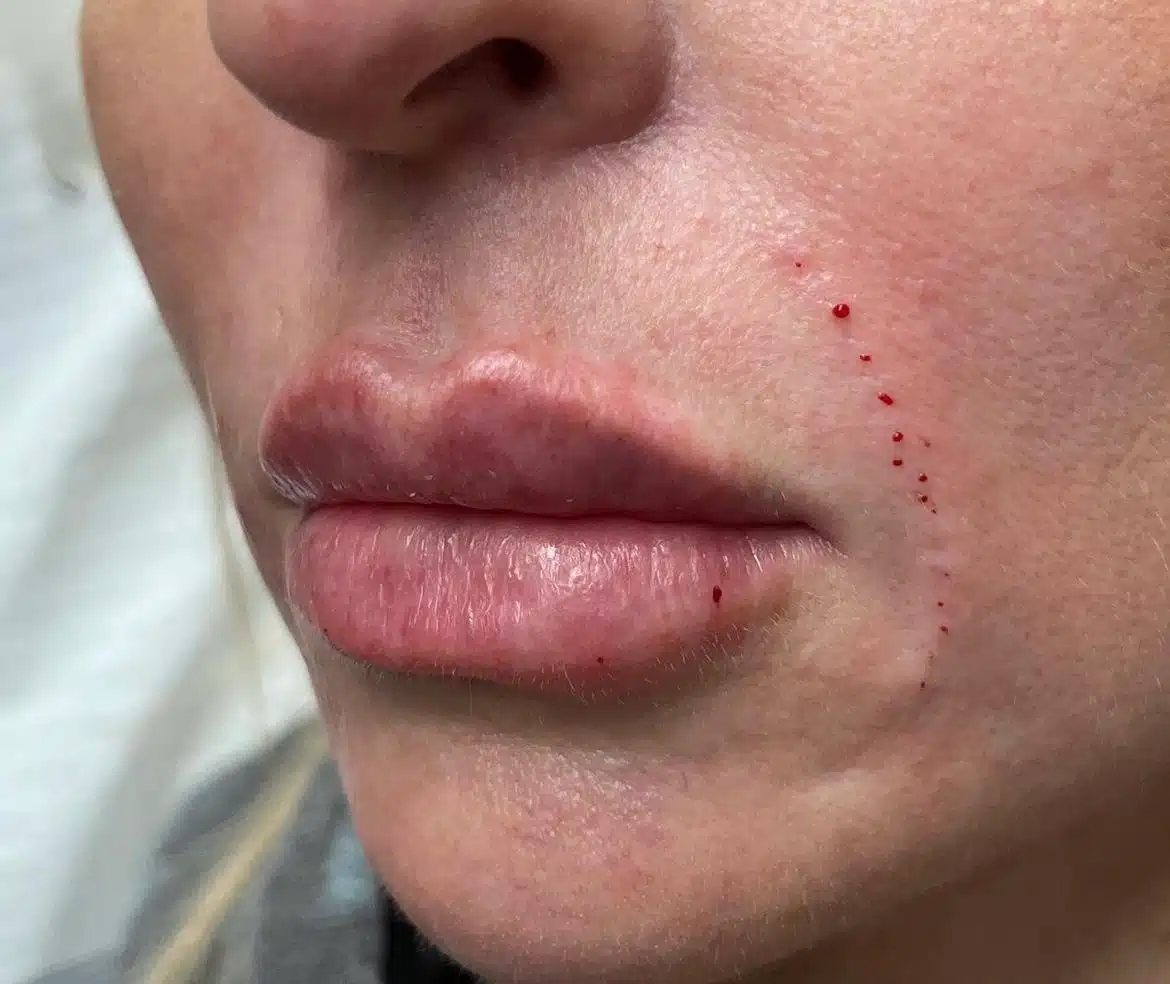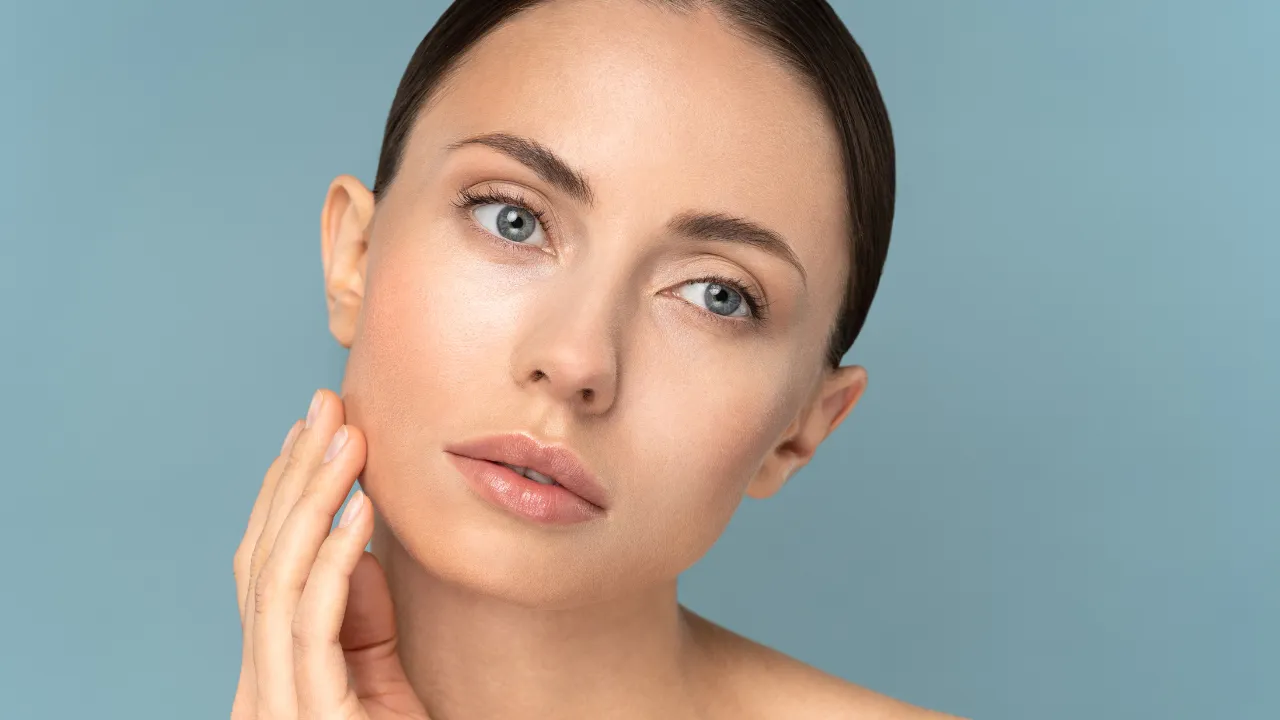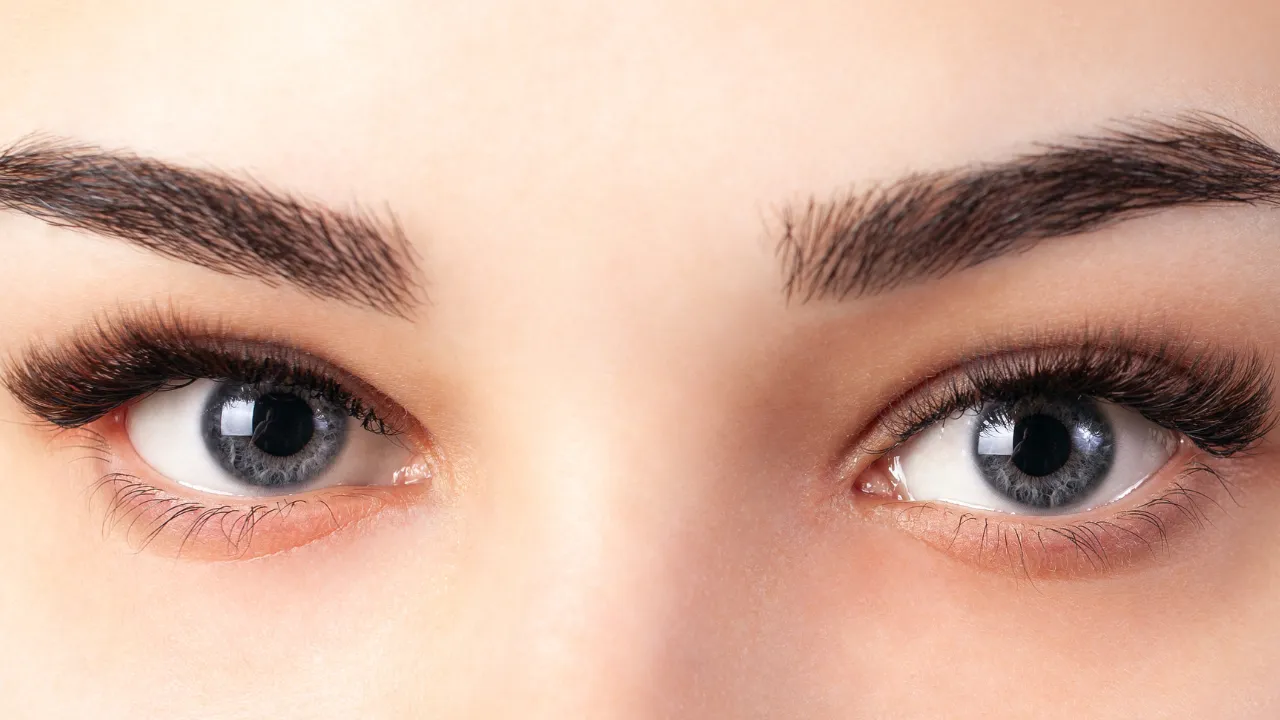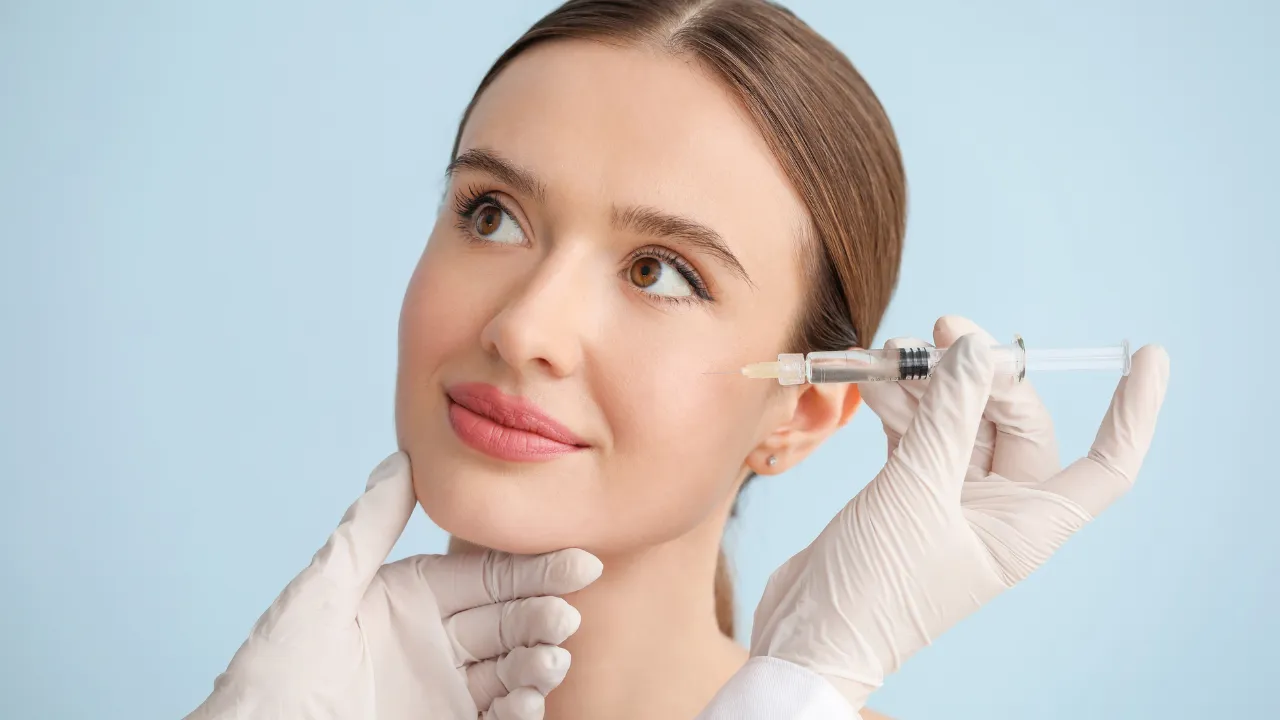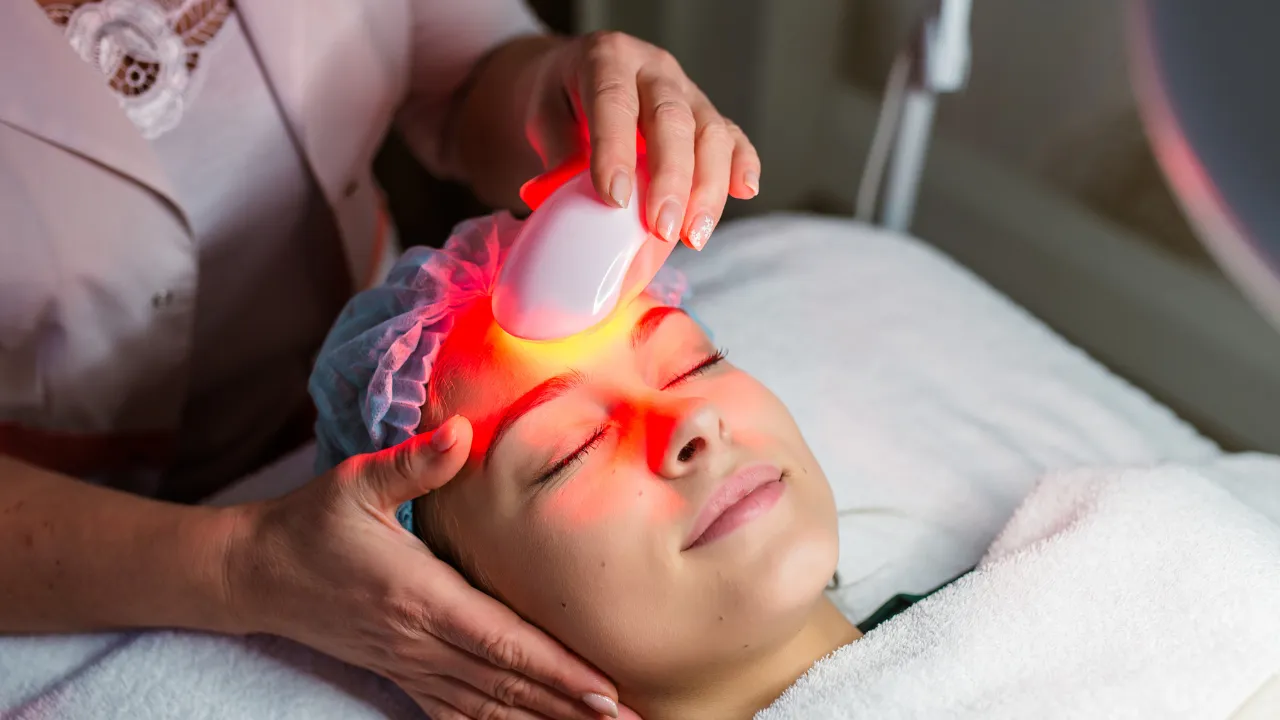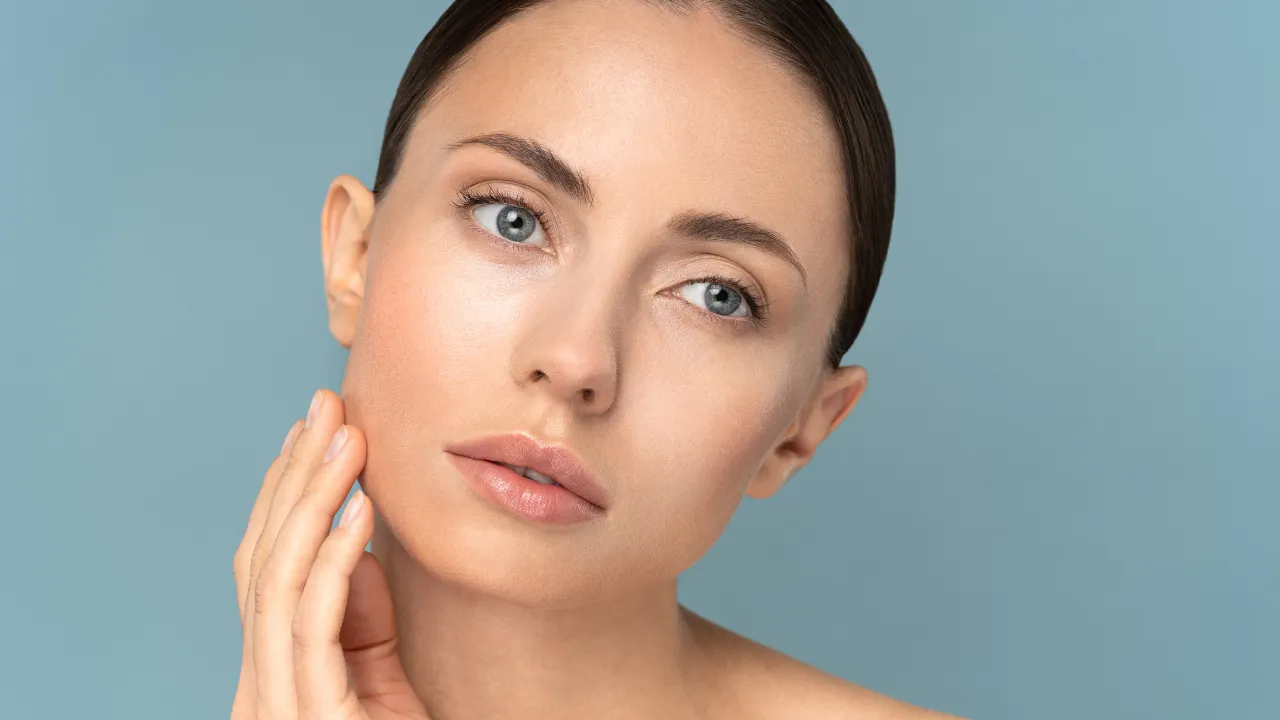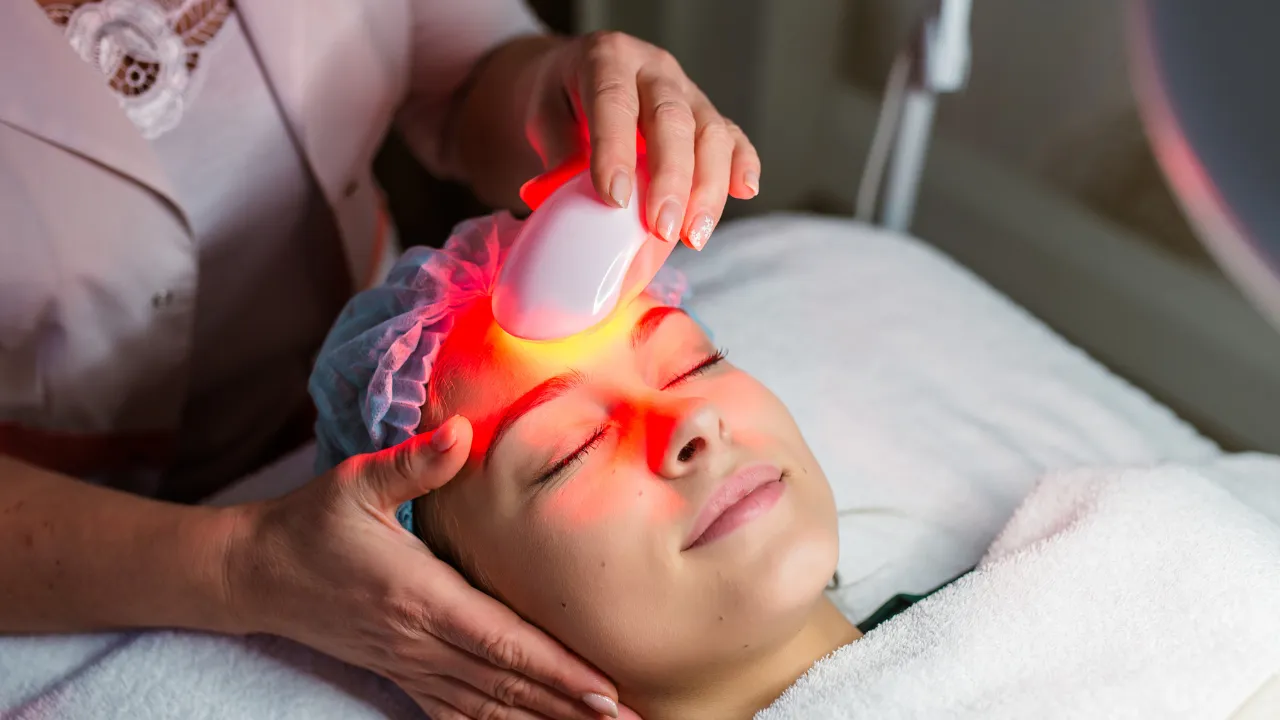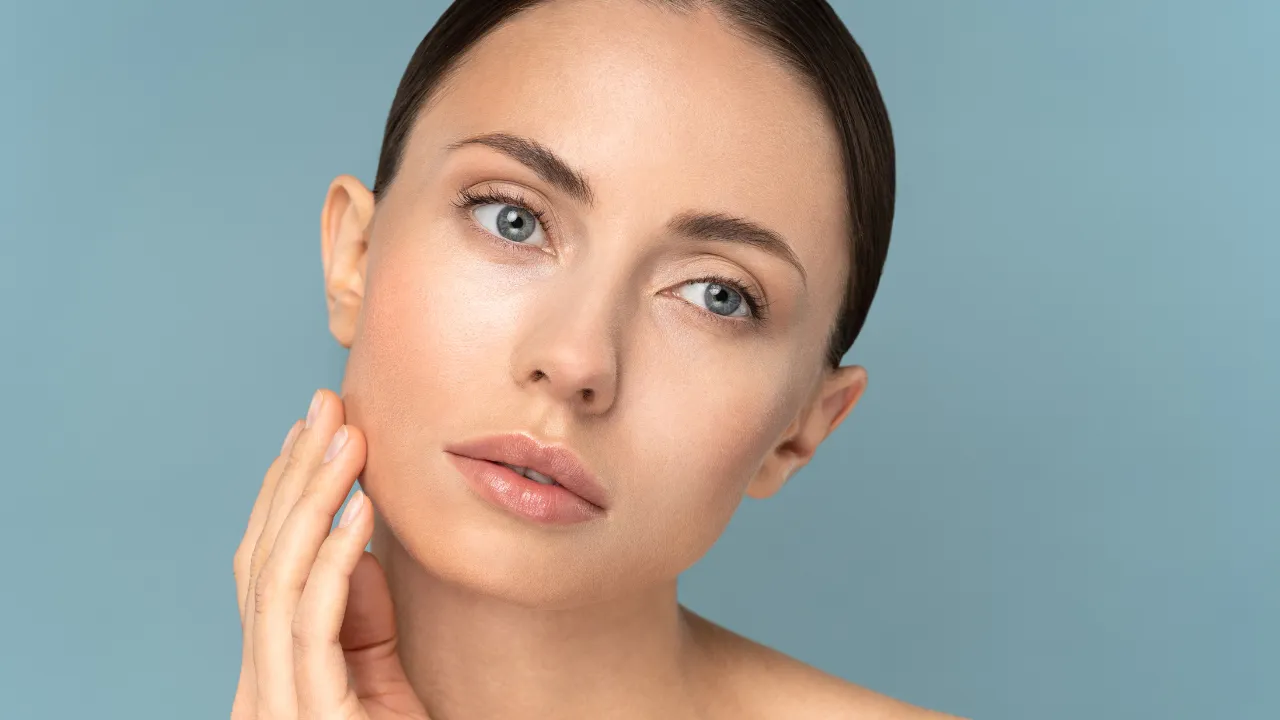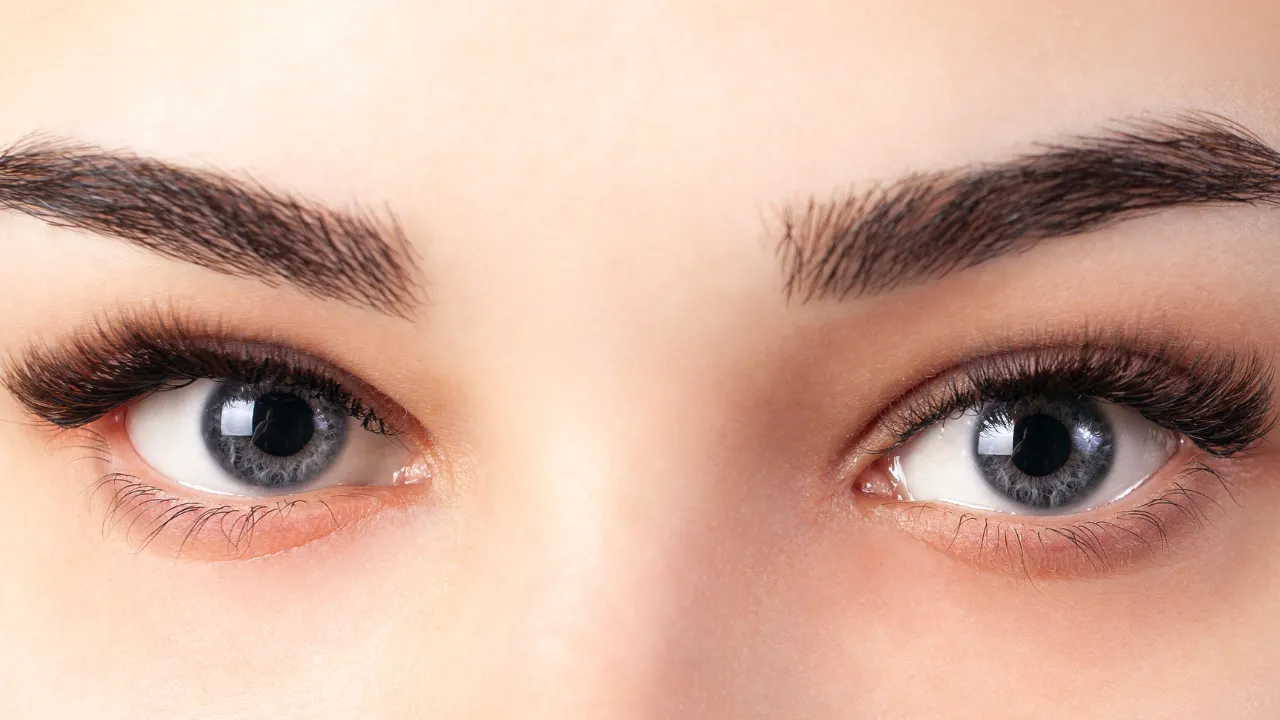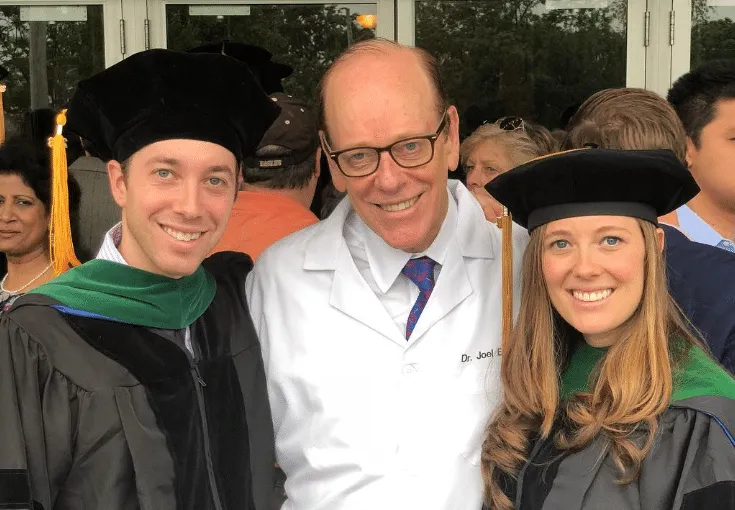Under-eye filler lumps are small bumps or uneven areas that appear after filler injections. They happen because of swelling, shallow placement, or how the dermal filler settles under thin skin, and many improve on their own, while others need treatment.
At Kopelman Aesthetic Surgery in New York City, Dr. Joel Kopelman helps patients determine whether a lump is normal healing or requires care. This guide explains the main causes and solutions, so patients know what to do and when to contact a specialist.
Key Takeaways
- Under-eye filler lumps often relate to swelling, placement depth, or filler behavior, and many improve without intervention.
- Some lumps require evaluation, especially when they feel firm, remain unchanged, or cause redness, warmth, or other side effects.
- Monitoring, guided massage, dissolving the filler, or updating the treatment plan can help when bumps do not settle.
- Delayed lumps may appear months or years later due to movement, inflammation, or changes in nearby eye bags and tear trough anatomy.
- Choosing the right type of filler, following post-treatment care, and working with an experienced injector lowers the risk of bumps.
Why Under-Eye Filler Lumps Happen
Are under-eye filler lumps normal?
Minor bumps or uneven texture can appear in the first days after filler treatment. Swelling often affects the tear trough area because the skin is thin. These changes usually improve as the filler settles and fluid shifts decrease. Many patients expect immediate smoothness, but a short adjustment period is normal, and learning about typical under-eye filler side effects helps clarify what changes are expected.
Normal swelling vs. filler bumps
Swelling tends to feel soft and improves steadily during early healing. It appears evenly and responds well to cool compresses. True filler bumps are more defined and stay in one place, which occurs when filler collects in a small pocket. Identifying these differences helps patients know when to wait and when to seek care.
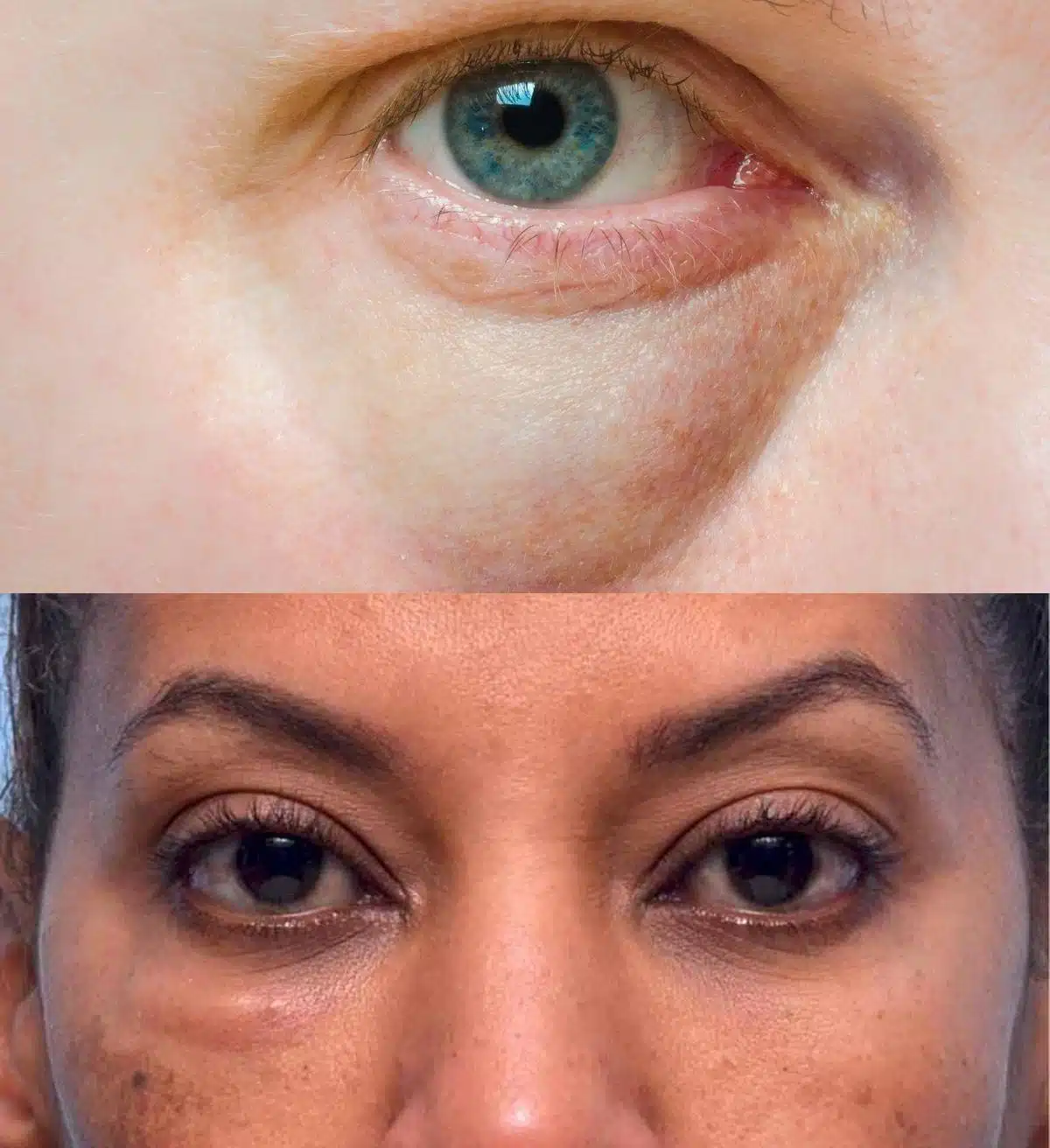
What Under-Eye Filler Lumps Look Like
Some lumps create small shadows under the eyes, while others appear raised with clear borders. Early swelling is usually even and fades as the treated area adjusts. More defined bumps may form if the filler accumulates in a single location. These visual cues help patients understand what they are seeing.
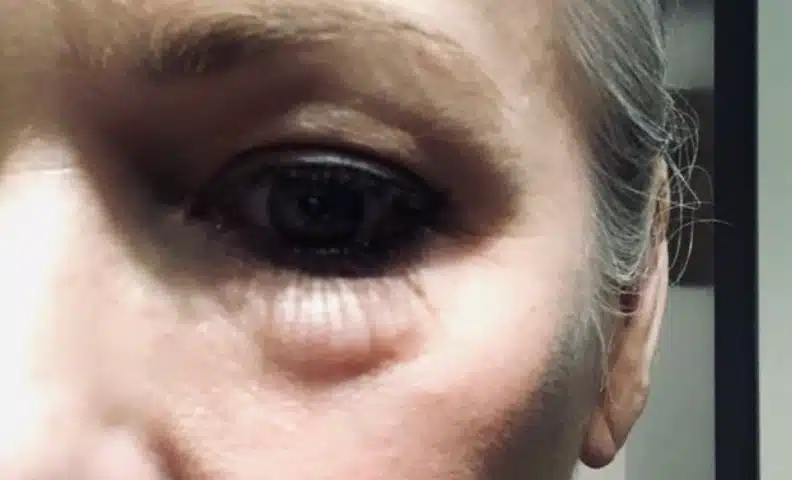
Visual Comparison Checklist
- Soft swelling that improves daily is normal.
- A firm bump in one location may be filler.
- A bluish tint may relate to shallow placement.
- Redness or warmth signals irritation.
Under-eye filler hard lump causes
Harder lumps can form when a dermal filler sits too close to the surface. Thin skin or mild inflammation can make the area feel firmer. Some fillers take longer to integrate into tissue. Persistent lumps should be evaluated to ensure proper healing in the tear trough zone.
What a filler granuloma looks like
A granuloma is a rare inflammatory nodule that may appear firm or tender. It often develops weeks or months after filler treatment and does not follow the pattern of normal swelling. This condition requires a medical evaluation. Granulomas should be treated promptly.
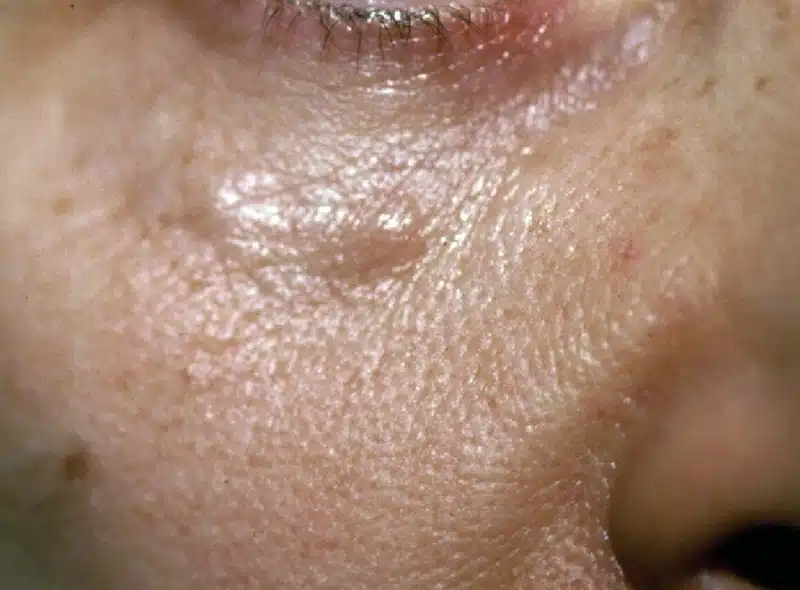
Understanding the Tyndall Effect
The Tyndall effect appears as a bluish tone under the skin when filler is placed too shallow. It may look like a lump or shadow even with a small amount of filler. Although not dangerous, it can impact appearance. Professional evaluation helps guide correction.
How Filler Texture Affects Lumps
Some hyaluronic acid-based fillers attract more water, which can create puffiness under the eyes. Softer fillers blend more easily with thin skin. Firmer fillers may remain visible in delicate tissue. These qualities explain why selecting the appropriate filler is essential for achieving aesthetic goals.
Placement issues and product choice
The under-eye area is highly sensitive to placement depth. Thick fillers can cause visible bumps, especially near eye bags or hollow tear trough contours. An improper injection technique can increase the risk of filler lumps under the eye. A careful approach helps prevent these issues.
Treatment Options for Under-Eye Filler Lumps
First Steps When You Notice a Lump
Staying calm is important because many lumps improve quickly. A cool compress can reduce swelling without disturbing the filler. Monitoring the bump over two days helps identify changes. Contact a specialist if the lump grows or becomes painful.
Simple Action Steps
- Apply cool compresses briefly.
- Avoid squeezing or rubbing.
- Note daily changes.
- Contact a provider if redness or firmness increases.
How to remove under-eye filler lumps
Treatment depends on the type of lump and how long it has been present. Most lumps respond to gentle massage under professional guidance. Some require dissolving with hyaluronidase to correct the treated area. A specialist helps determine the most suitable treatment plan.
Will under-eye filler lumps go away?
Many lumps soften as swelling decreases, which is why understanding typical under-eye filler recovery timelines can help set realistic expectations. Some improve over several weeks. Swelling-based changes often resolve on their own. Persistent lumps may need treatment.
How long filler lumps typically last
Soft swelling usually fades within one to two weeks. Firmer bumps may take longer, depending on the filler type. Some may take months to settle. Evaluation helps guide next steps.
How to massage under-eye filler lumps
A gentle massage may help when recommended by an expert. Light pressure in small motions can soften minor clumps. Strong pressure can shift the product and worsen results. Follow professional guidance only.
When dissolving the filler is needed
Dissolving the filler works well for bumps that do not improve or affect symmetry, and some patients ask whether they can dissolve under-eye filler naturally at home before seeking professional care. Hyaluronidase breaks down hyaluronic acid filler safely. It is effective for ridges or long-standing lumps. Only trained professionals should perform this procedure.
When Early Dissolving Is the Best Option
Some issues improve more quickly when dissolving is done early. A firm lump that does not change after the first week often responds better to early intervention. Visible ridges affecting symmetry are also candidates. Acting early prevents the problem from becoming more noticeable.
Safe vs unsafe at-home treatments
Cold compresses are safe, but squeezing or using internet techniques is not. These methods can irritate the skin or shift the filler. DIY dissolving is dangerous and should be avoided. Always seek professional advice.
Delayed or Long-Term Lumps
Under-eye filler lumps after years
Some lumps may appear long after treatment due to filler movement or changes in the support structures around eye bags. Even long-lasting fillers can shift in thin skin. These changes often surprise patients. A specialist identifies the cause.
Filler lumps months later
Lumps appearing months later may involve inflammation or gradual migration. Some fillers attract water over time, causing puffiness. These changes fall outside the normal early healing phase. Examination helps guide treatment.
Why do delayed lumps develop
Inflammation, aging, and movement can create delayed lumps. Sometimes this occurs when filler interacts with changes in facial structure. Dental work or environmental triggers may also contribute. Early review helps prevent worsening.
Signs a late-onset lump may need treatment
A firm lump that remains unchanged for weeks needs care. Visible puffiness or shadowing may indicate product buildup. Pain or redness also requires evaluation. Patients should not wait for improvement on their own.
Common Situations That Concern Patients
Patients often worry when lighting makes a lump look more prominent. Others feel concerned when a firm bump persists over time. A lump that appears suddenly after months can also raise questions. These experiences commonly lead patients to seek advice.
How a Specialist Diagnoses Under-Eye Lumps
A specialist checks the lump’s depth, texture, and movement. They review the type of filler used and the tissue’s response. Lighting and symmetry help identify placement issues. These findings guide a safe and effective treatment plan.
How to Prevent Filler Lumps
Qualifications to look for in an injector
Experienced injectors understand the complexities of the tear trough and eye bags. Specialists who work with this region regularly manage depth and placement more precisely. Their training supports better blending of filler. Choosing the right provider helps reduce risks.
Aftercare steps
Good aftercare supports even settling of the filler. Patients should avoid heat, heavy exercise, and rubbing the area during day one. Cool compresses can reduce inflammation. These steps support smooth healing during post-treatment.
Early Aftercare Timing Guide
The first 24 hours require gentle care due to increased swelling. Avoiding hot showers and makeup helps protect the treated area. Many patients notice improvement after 48 hours. Following these steps helps prevent early bumps.
Filler types that lower risk
Soft fillers often blend well with thin under-eye tissue, and learning about the best facial fillers can help patients understand which products offer smoother results. Low-viscosity options reduce visible texture. Discussing the type of filler with a specialist helps achieve smoother results. Proper selection lowers lump risk.
Who Should Avoid Under-Eye Filler
Certain patients may not be good candidates due to anatomy or medical conditions. Thin skin, prominent eye bags, or chronic irritation can lead to uneven results. Patients with allergies or active inflammation may need to delay treatment. A consultation ensures safety.
Signs of a Botched Under-Eye Treatment
Ridges, uneven texture, or exaggerated puffiness can indicate a poor outcome. Asymmetry that does not improve may also signal a problem. Pain, redness, or hard nodules require immediate attention and may indicate an under-eye filler gone wrong situation that needs prompt evaluation. A specialist should evaluate these signs.
When to Contact a Specialist Like Dr. Joel Kopelman
Patients should reach out when lumps do not improve, cause discomfort, or change shape. A specialist determines whether the issue is normal or needs treatment. At Kopelman Aesthetic Surgery, Dr. Kopelman provides safe options to restore balance. Early evaluation helps protect long-term results.
To review your concerns or explore safe options for smoother under-eye results, you can schedule a consultation with Dr. Kopelman for personalized guidance and care.

